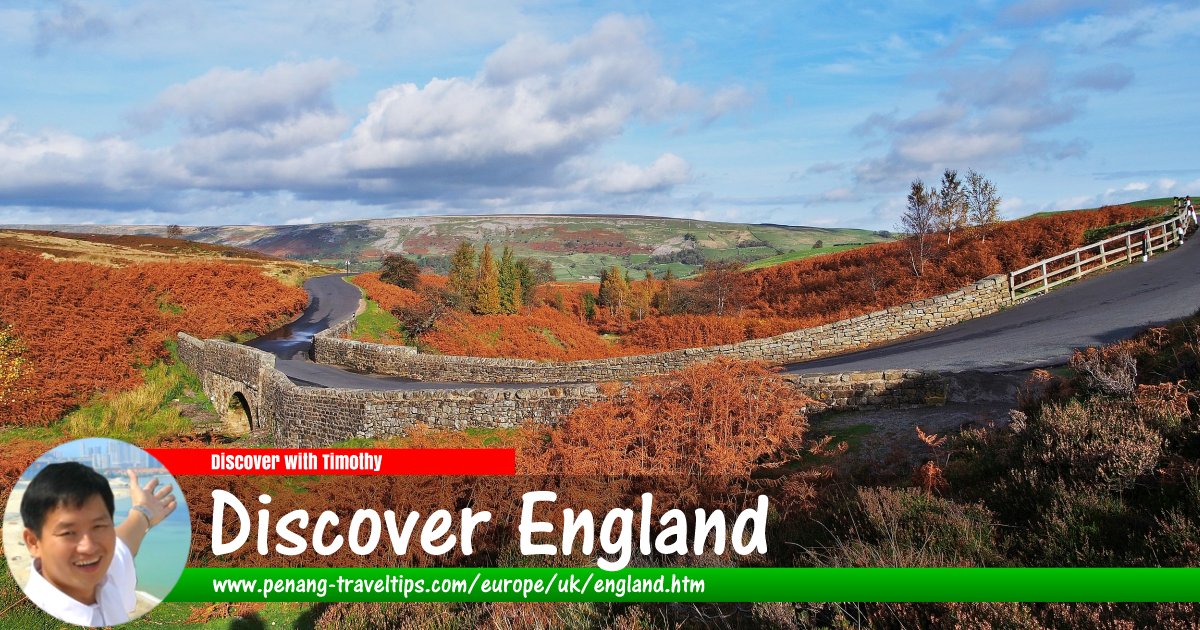 Discover England
Discover EnglandKreuzschnabel, CC BY-SA 3.0, via Wikimedia Commons
Map of Ceremonial Counties of England
- Bedfordshire

- Berkshire

- Buckinghamshire

- Cambridgeshire

- Cheshire

- Cornwall

- County Durham

- Cumbria

- Derbyshire

- Devon

- Dorset

- East Riding of Yorkshire

- East Sussex

- Essex

- Gloucestershire

- Greater Manchester

- Hampshire

- Herefordshire

- Hertfordshire

- Isle of Wight

- Kent

- London

- Lancashire

- Leicestershire

- Lincolnshire

- Merseyside

- Norfolk

- North Yorkshire

- Northamptonshire

- Northumberland

- Nottinghamshire

- Oxfordshire

- Rutland

- Shropshire

- Somerset

- South Yorkshire

- Staffordshire

- Suffolk

- Surrey

- Tyne and Wear

- Warwickshire

- West Midlands County

- West Sussex

- West Yorkshire

- Wiltshire

- Worcestershire

Map of cities in England
Cities in England
City status are often according during festive occasions. The following list dates from the granting of city status on the occasion of the Platinum Jubilee of Elizabeth II in 2022.- City of London (GPS: 51.51234, -0.09098; time immemorial)

- City of Westminster (GPS: 51.51453, -0.15953; 1540)

- Bath (GPS: 51.3781, -2.35968; 1090)

- Birmingham (GPS: 52.48624, -1.8904; 1889)

- Bradford (GPS: 53.79379, -1.75635; 1897)

- Brighton & Hove (GPS: 50.82262, -0.13704; 2000 Millennium Celebration)

- Bristol (GPS: 51.45451, -2.58791; 1542)

- Cambridge (GPS: 52.19507, 0.13127; 1951)

- Canterbury (GPS: 51.28023, 1.0789; time immemorial)

- Carlisle (GPS: 54.89247, -2.93293; 1133)

- Chelmsford (GPS: 51.73558, 0.46854; 2012)

- Chester (GPS: 53.19339, -2.89307; 1541)

- Chichester (GPS: 50.83761, -0.77493; 1075)

- Colchester (GPS: 51.89592, 0.89187; 2022 Platinum Jubilee)

- Coventry (GPS: 52.41281, -1.50895; 1102)

- Derby (GPS: 52.92253, -1.47461; 1977 Silver Jubilee)

- Doncaster (GPS: m53.52282, -1.12846; 2022 Platinum Jubilee)

- Durham (GPS: 54.77525, -1.58485; 995)

- Ely (GPS: 52.39953, 0.26236; 1109)

- Exeter (GPS: 50.72603, -3.52748; time immemorial)

- Gloucester (GPS: 51.86424, -2.23815; 1541)

- Hereford (GPS: 52.05639, -2.71597; time immemorial)

- Kingston upon Hull (GPS: 53.76762, -0.32741; 1897)

- Lancaster (GPS: 54.0449, -2.79934; 1937)

- Leeds (GPS: 53.80075, -1.54907; 1893)

- Leicester (GPS: 52.63687, -1.13975; 1919)

- Lichfield (GPS: 52.6816, -1.83167; time immemorial)

- Lincoln (GPS: 53.23068, -0.54057; 1072)

- Liverpool (GPS: 53.40837, -2.99157; 1880)

- Manchester (GPS: 53.48075, -2.24263; 1853)

- Milton Keynes (GPS: 52.04062, -0.75941; 2022 Platinum Jubilee)

- Newcastle upon Tyne (GPS: 54.97825, -1.61778; 1882)

- Norwich (GPS: 52.62925, 1.29788; 1094)

- Nottingham (GPS: 52.95402, -1.15498; 1897)

- Oxford (GPS: 51.75202, -1.25772; 1542)

- Peterborough (GPS: 52.57031, -0.24079; 1541)

- Plymouth (GPS: 50.37545, -4.14265; 1928)

- Portsmouth (GPS: 50.81976, -1.08797; 1926)

- Preston (GPS: 53.7632, -2.70309; 2002)

- Ripon (GPS: 54.13613, -1.52377; 1865)

- Salford (GPS: 53.48752, -2.29012; 1926)

- Salisbury (GPS: 51.06878, -1.79447; 1227)

- Sheffield (GPS: 53.38112, -1.47008; 1893)

- Southampton (GPS: 50.91054, -1.4049; 1964)

- Southend-on-Sea (GPS: 51.54592, 0.70771; 2022, Platinum Jubilee)

- St Albans (GPS: 51.75272, -0.33943; 1877)

- Stoke-on-Trent (GPS: 53.00333, -2.18274; 1925)

- Sunderland (GPS: 54.90686, -1.3838; 1992)

- Truro (GPS: 50.26319, -5.05104; 1877)

- Wakefield (GPS: 53.68329, -1.50592; 1888)

- Wells (GPS: 51.21049, -2.64677; time immemorial)

- Winchester (GPS: 51.05977, -1.31014; time immemorial)

- Wolverhampton (GPS: 52.58681, -2.12565; 2001)

- Worcester (GPS: 52.19363, -2.22157; time immemorial)

- York (GPS: 53.96142, -1.07391; time immemorial)

Regions of England
Introducing England
England is one of the component countries of the United Kingdom. It covers 130,395 sq km (50,346 sq mi) and has a population of 51.5 million people. The capital and biggest city in England is London.England occupies the central and southern part of the island of Great Britain. It is bordered by the two other countries in Great Britain, namely Scotland to the north and Wales to the west. It also includes over a hundred small islands and island groups in its surrounding waters, among them the Isles of Scilly and the Isle of Wight.
History of England
Evidence of human habitation in England goes back to the time of the Homo antecessor, some 780,000 years ago. The oldest proto-human bones found in England date to 500,000 years ago. Ancient cultures inhabited England, leaving monuments from the past such as Stonehenge and Avebury.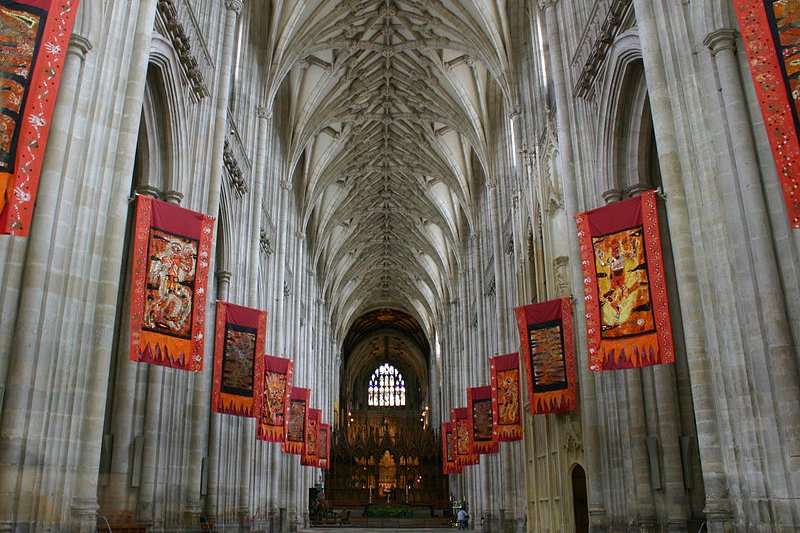 Winchester Cathedral, England
Winchester Cathedral, EnglandSource: https://commons.wikimedia.org/wiki/File:Winchester_cathedral_flags.jpg
Author: Tom Habibi

Celtic culture arrived in England from Central Europe during the Iron Age. One of the earliest known spoken language in England was Brythonic, spoken by ancient Britons. The ancient Romans arrived in Britain in AD 43, during the reign of Emperor Claudius. They conquered much of Britain and added it into the Roman Empire as Britannia province. The Romans introduced Roman law, architecture, sewage system, silk and a number of agricultural items.
Christianity is believed to have been introduced into Britain by the 4th century, but Christian missionaries may have arrived as early as AD 180, sent on the request of chieftain Lucius of Britain.
As decline of the Roman Empire declined led to the withdrawal of the Romans from England in AD 410. In their place came the Angles, Saxons and Jutes, collectively the Anglo-Saxons, who settled first on the eastern part of Great Britain, and over time spread throughout the island. In doing so, they took over areas which were under Brythonic control. The kingdoms established by the Anglo-Saxons included the kingdoms of Northumbria, Mercia, Wessex, East Anglia, Essex, Kent and Sussex.
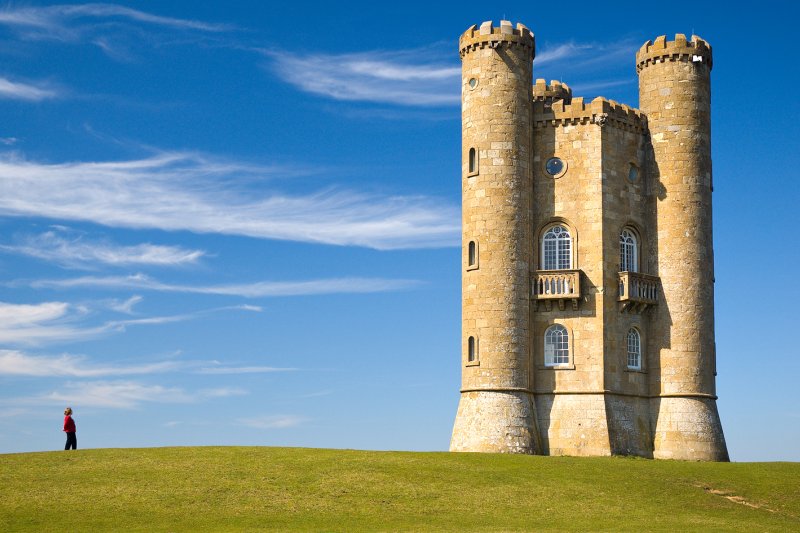 Broadway Tower in Cotswold, England
Broadway Tower in Cotswold, EnglandSource: https://commons.wikimedia.org/wiki/File:Broadway_tower_edit.jpg
Author: Newton2

In the 9th century, the position of the Anglo-Saxons was challenged by the Vikings, or Danes, who conquered the north and east part of England, overthrowing the Anglo-Saxon kingdoms of Northumbria, Mercia and East Anglia, and establishing their territory known as Danelaw. The only Anglo-Saxon kingdom to survive was the kingdom of Wessex under Alfred the Great. It managed to expand and even encroach into territories held by the kingdoms of the Danelaw. Another wave of Scandinavian attack in the late 10th century consolidated England into a short-lived North Sea empire that included Denmark and Norway. This lasted until 1042, when Edward the Confessor became king, returning native rule to England.
The Norman Conquest of 1066 brought along the Normans who came from Normandy, France, but were originally from Scandinavia. The English aristocrats were displaced by a new line of French-speaking aristocrats, helping introduce many Latin-based words into the English language.
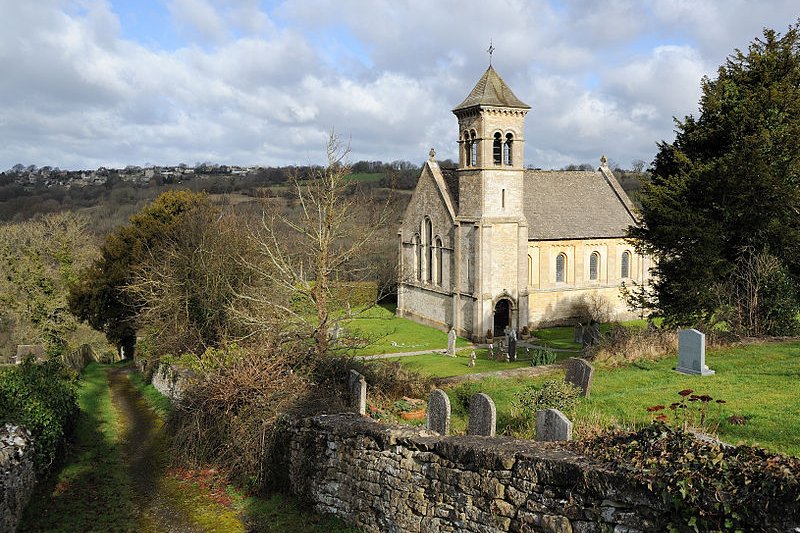 The St Luke's Church in Frampton Mansell, England
The St Luke's Church in Frampton Mansell, EnglandSource: https://commons.wikimedia.org/wiki/File:Frampton_Mansell_St_Lukes_Church.jpg
Author: Saffron Blaze

In 1485, a new ruling family originating in Wales established the Tudor dynasty to rule the Kingdom of England and its realms. The period until 1603 was known as the Tudor period. The rulers of the Tudor dynasty were Henry VII (1457-1509), Henry VIII (1509-1547), Edward VI (1547-1553), Mary I (1553-1558) and Elizabeth I (1558-1603).
Under King Henry VIII, England broke away from the rest of Europe due to disagreement between the king and the Pope over the issue of divorce. It led to the country turning its back on the Catholic Church and the founding of the Church of England. Unlike the rise of Protestantism in Europe, the establishment of the Anglican church is rooted in politics rather than theology.
The reign of King Henry VIII was followed by that of his young son Edward VI, who took the throne at age nine. He was succeeded by his half-sister Mary I, who restored the Roman Catholic faith, while she was subsequently succeeded by her half-sister Elizabeth I, who brought back Anglicanism.
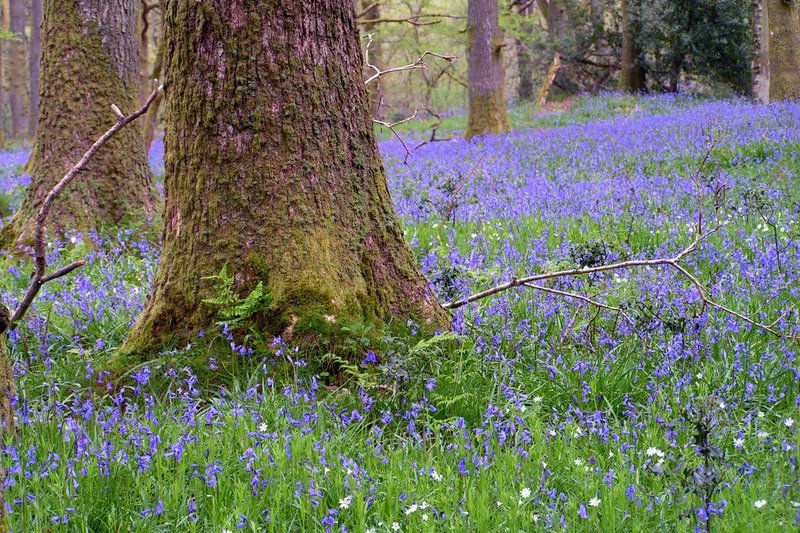 May Bluebells, England
May Bluebells, EnglandSource: https://commons.wikimedia.org/wiki/File:May_Bluebells.jpg
Author: Dave&Lynne Slater

The period under Queen Elizabeth I is known as the Elizabethan era, and is regarded as the golden age in English history. This was the height of the English Renaissance, and the flourishing of cultures, as reflected in works of William Shakespeare. It was also when Walter Raleigh established the first English colony in the Americas in Virginia.
When Elizabeth I died unmarried and without an heir, the throne passed to King James VI of Scotland, who inherited the throne as King James I of England, and brought the rule of the House of Stuart to England. Under the reign of King James I, the Christian Bible was translated by the Church of England between 1604 and 1611, and became known today as the King James Bible, the Authorized Version or the King James Version.
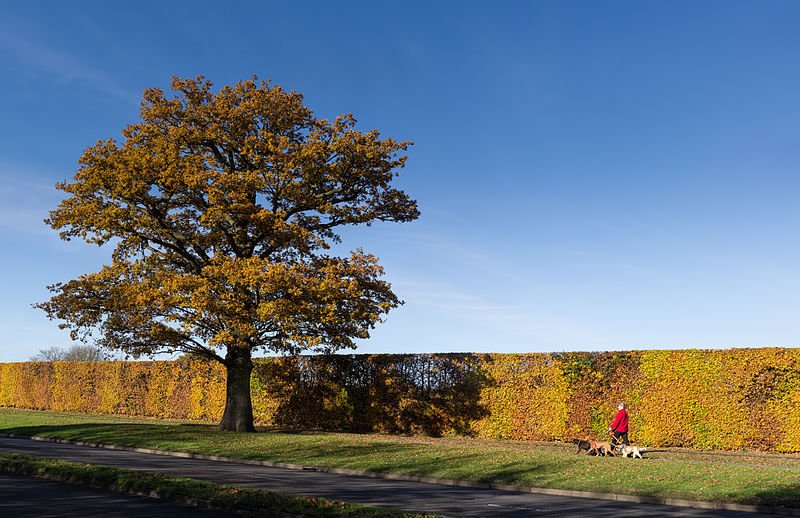 Oak tree in autumn at Stevenage, England
Oak tree in autumn at Stevenage, EnglandSource: https://commons.wikimedia.org/wiki/File:Autumn_Oak_-_Broadhall_Way_-_Stevenage.jpg
Author: Colin

Before King James I became the king of England, nine Stuarts (or Stewarts) had ruled Scotland since 1371. With the Union of the Crowns, six Stuart monarchs ruled England and Scotland until the Acts of Union of 1707, which created the United Kingdom of Great Britain, joining together the kingdoms of England and Scotland.
Political, religious and social conflict between supporters of the Parliament and those of King Charles I resulted in the English Civil War (1642-1651). It caused King Charles I to be executed and his son Charles II to be sent into exile. During that period, the English monarchy was replaced by the Commonwealth of England (1649-1653) and then by the Protectorate (1653-59), with Oliver Cromwell as Lord Protector. After Cromwell's death, Charles II was invited to return and reigned as monarch from 1660 with the Restoration.
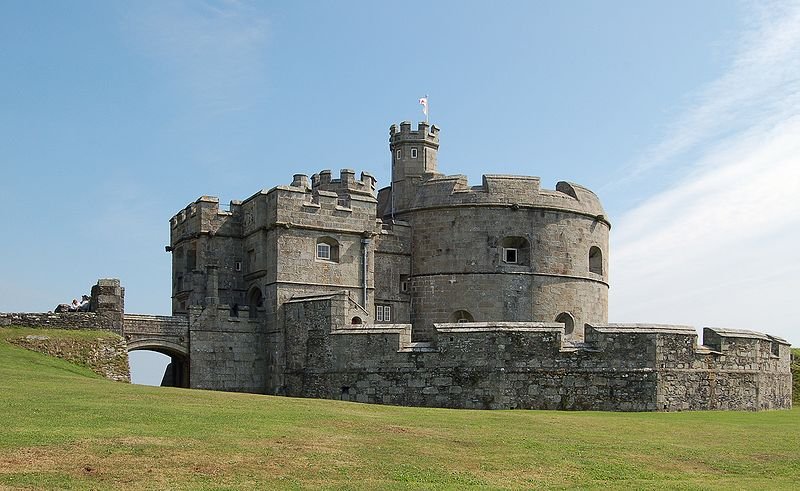 Pendennis Castle
Pendennis CastleSource: https://commons.wikimedia.org/wiki/File:Pendennis_Castle_keep.jpg
Author: Nilfanion

In 1707, the parliaments of England and Scotland agree to a political union of the two countries. The Acts of Union 1707 created the Kingdom of Great Britain. This was at the dawn of the Industrial Revolution, which brought great socioeconomic and cultural changes to England, the construction of canals and waterways in the 18th century, and railway lines in the 19th century.
In 1714, the House of Stuart was replaced by the House of Hanover, so named because it traces its origin to the Duchy of Braunschweig-Lüneburg in Germany. The rulers of the House of Hanover were George I (r.1714-27), George II (r.1727-60), George III (r.1760-1820), George IV (r.1820-30), William IV (r.1830-37) and Victoria (r.1837-1901). The Georgian era spans the reigns of kings George I through IV, although the brief reign of William IV is also often included. The Victorian era spans the reign of Queen Victoria. The Acts of Union 1800 created the United Kingdom of Great Britain and Ireland.
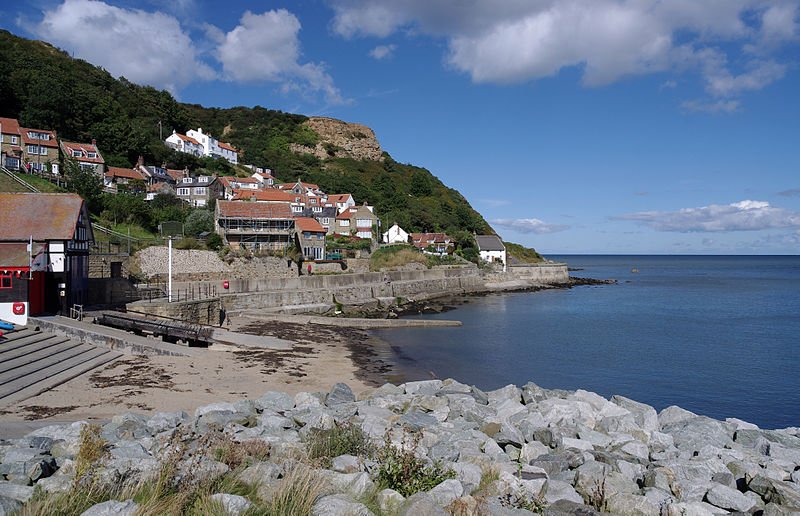 Runswick Bay
Runswick BaySource: https://commons.wikimedia.org/wiki/File:Runswick_Bay_MMB_05.jpg
Author: mattbuck

London became the largest and most populous metropolitan area in the world during the Victorian Era, and Britain as a whole produced the bulk of the world's GDP. The First World War started the gradual decline in the British Empire accelarating with the rapid decolonization after the Second World War. The creation of the Irish Free State in 1922 led to the creation in 1927 of the United Kingdom of Great Britain and Northern Ireland.
In the post-World War II decades, England has experienced a gradual moving away from manufacturing, at times accompanied by massive unemployment and layoffs, as the economy shifted towards the service industry. Today England still has one of the largest economies in the world, with an average GDP per capita of £22,907. London is the nerve center of the economy of England, being home to the largest financial center in Europe.
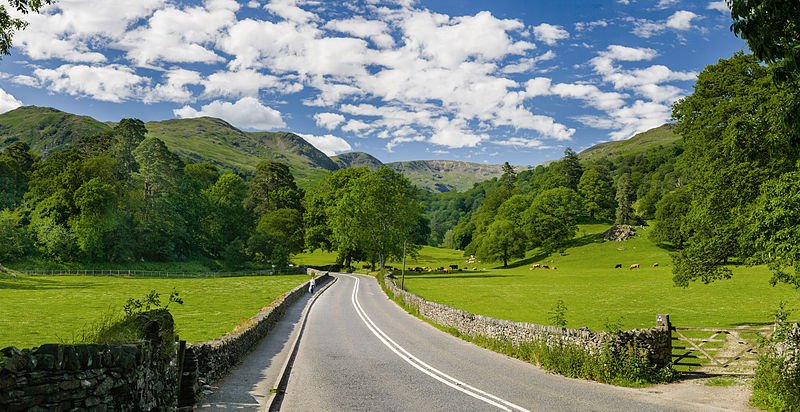 A country road in the beautiful Lake District, between Ambleside and Grasmere
A country road in the beautiful Lake District, between Ambleside and GrasmereSource: https://commons.wikimedia.org/wiki/File:A591_road,_Lake_District_-_June_2009_Edit_1.jpg
Author: David Iliff

Geography of England
Unlike much of continental Europe, England is characterized by plains and low hills. The highest point in England is the 978-meter (3,209-ft) Scafell Pike in Cumbria. The longest river in England is the Severn, which is 354 km (220 mi) long. It starts in the Cambrian Mountains of mid Wales and flows through Shropshire, Worcestershire and Gloucestershire before emptying into the Bristol Channel.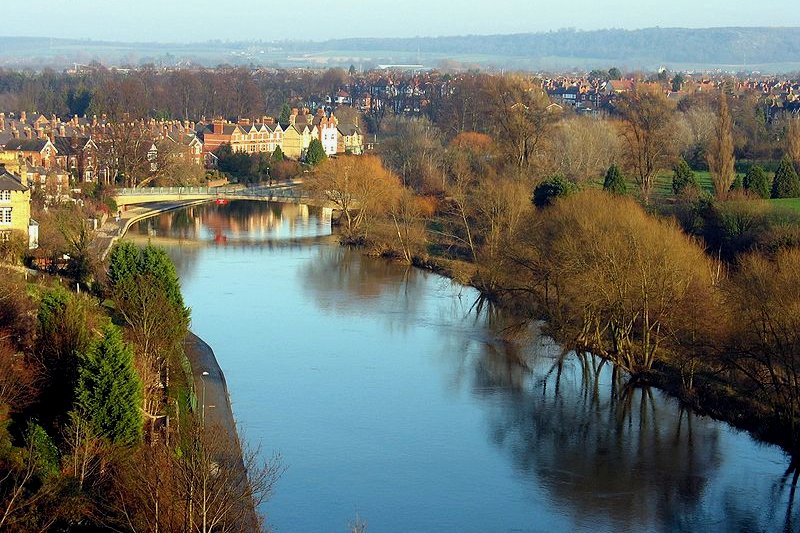 River Severn in Shrewsbury, as seen from Shrewsbury Castle
River Severn in Shrewsbury, as seen from Shrewsbury CastleSource: https://en.wikipedia.org/wiki/File:SevernFromCastleCB.JPG
Author: Chrisbayley

Climate of England
England experiences a temperate maritime climate. Temperatures tend to be mild and does not generally go down below 0°C (32°F) even in winter. Warmest months and July and August, when the average high temperature rises to 21°C (70°F) while January and February are the coldest months, with average low temperature of 1°C (34°F). Precipitation is fairly evently distributed with the winter months receiving the higher precipitation.Population of England
The Greater London Urban Area is the largest metropolitan area in England. With a population of 8.3 million people, it has more people than Scotland, Northern Ireland and Wales. Other major urban areas in England include the West Midlands Urban Area, with 2.28 million people, centered on Birmingham and includes the cities of Wolverhampton, Dudley and Walsall; and the Greater Manchester Urban Area, centered on Manchester, and includes the cities of Salford, Bolton, Stockport and Oldham.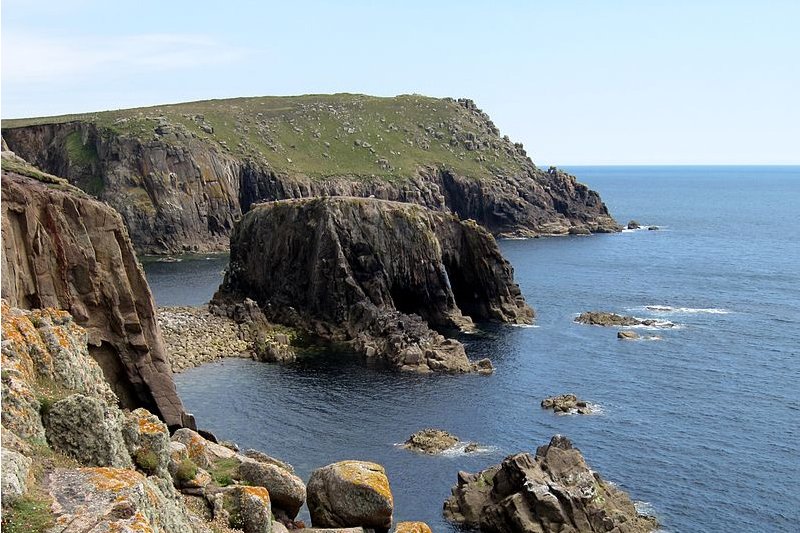 Enys Dodnan and Pordenack Point at Land's End
Enys Dodnan and Pordenack Point at Land's EndSource: https://commons.wikimedia.org/wiki/File:Land%E2%80%99s_End_11.jpg
Author: Olaf Tausch

 Latest updates on Penang Travel Tips
Latest updates on Penang Travel Tips

Copyright © 2003-2025 Timothy Tye. All Rights Reserved.

 Go Back
Go Back